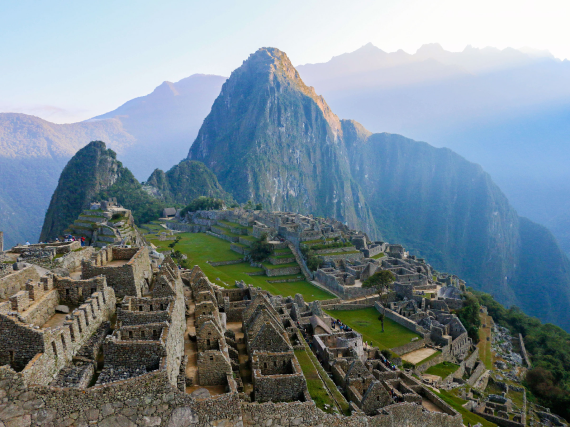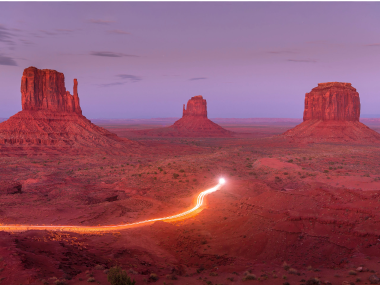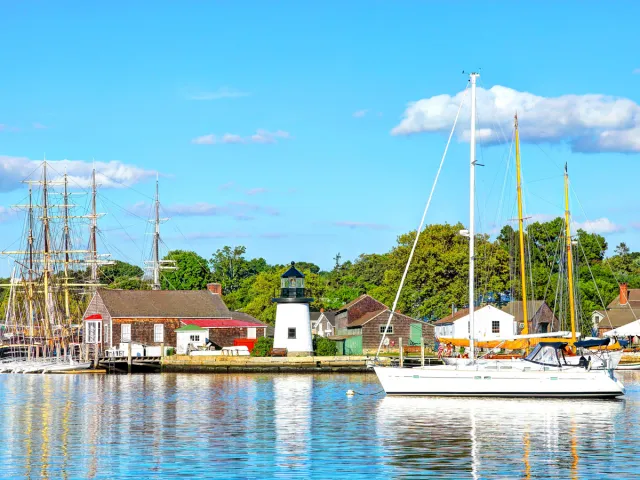In 1968, the U.S. government passed the National Trails System Act, which called for the creation of publicly accessible trails in urban and rural settings across the country in order to promote appreciation and enjoyment of the great American outdoors. These trails were to be divided into three groups: national scenic trails, national historic trails, and national recreation trails. The national scenic trails, in particular, are intended to showcase and conserve the country’s natural beauty and resources. Each spans at least 100 miles — crossing important cultural and historical landmarks and connecting communities across the nation. Learn more about these 11 iconic trails and where to find them.
Appalachian Trail

By far the most well known of the 11 national scenic trails in the U.S. is the Appalachian Trail. It the longest hiking-only footpath in the world, and it was designated as the country’s first national scenic trail in 1968. The Appalachian Trail runs over 2,190 miles through 14 states, between Georgia and Maine, with an elevation range of 464,500 feet.
The trail itself opened to the public in 1937, and it runs through the Appalachian Mountains through six national parks, eight national forests, the Blue Ridge mountains, the Berkshires, the Green and White Mountains, and the Mahoosuc Range. It is frequented by short-term hikers, section-hikers, and ambitious thru-hikers who hike the entire trail in one season.
Arizona Trail

The Arizona Trail runs 800 miles long through mountains, canyons, and wilderness from the U.S.-Mexico border to Arizona’s border with Utah. It became an official national scenic trail in 2009 and is divided into 43 passages. Hikers looking to complete the entirety of the trail in small trips can follow the recommendations of the Arizona Trail Day Hiker’s Guide. The guid features 89-day hikes ranging from 3.8 miles to 13.8 miles each.
Continental Divide Trail
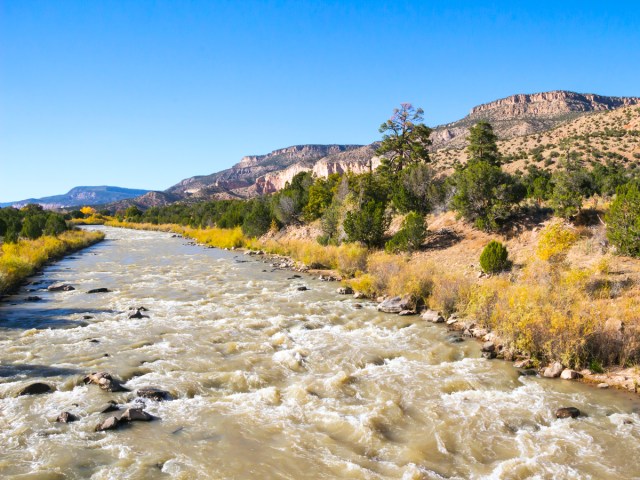
The Continental Divide Trail spans a whopping 3,100 miles between the Mexican and Canadian borders. It runs through Montana, Idaho, Wyoming, Colorado, and New Mexico, passing varied terrain of desert, mountains, and glacial valleys. The trail runs alongside the Continental Divide, which connects the Rocky Mountains in Canada with the Andes in South America. The Continental Divide Trail ranges in altitude from 4,000 to 14,000 feet and makes up one-third of the prestigious Triple Crown — an award bestowed to hikers who complete the Continental Divide Trail, the Appalachian Trail, and the Pacific Crest Trail.
Florida Trail
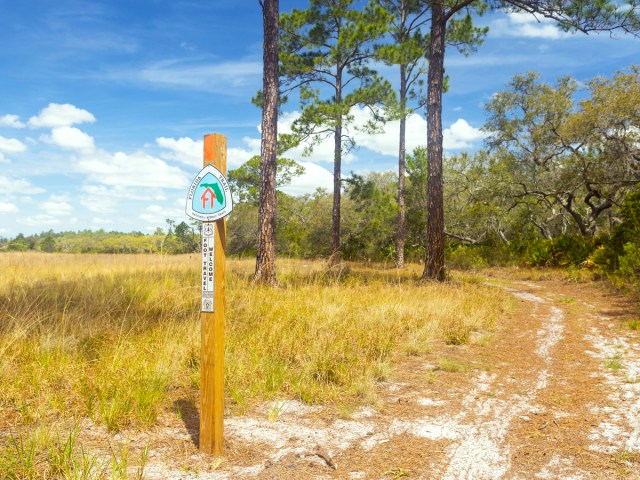
The 1,300-mile-long Florida Trail is one of three national scenic trails contained entirely in one state. It travels from Big Cypress National Preserve in southern Florida to Gulf Islands National Seashore on the western end of Florida’s panhandle. Visitors can hike, swim, bike, horseback ride, picnic, and paddle on different sections of the trail. The Florida Trail’s four regions consist of a wide range of terrain, including estuaries, sandhills, forests, and swamps. The trail’s founder, Jim Kern, first had the idea for the Florida Trail while hiking the Appalachian Trail in the early 1960s.
Ice Age Trail

The Ice Age Trail is a 1,200-mile footpath located along glacial remnants from the last ice age. It passes through Wisconsin’s lakes, rivers, prairies, and forests, all landscapes sculpted by continental glaciation. Hikers and snowshoers can study billion-year-old basalt bluffs and quartzite as well as 100-foot-deep kettle depressions caused by melted ice along the Ice Age Trail.
Natchez Trace Trail
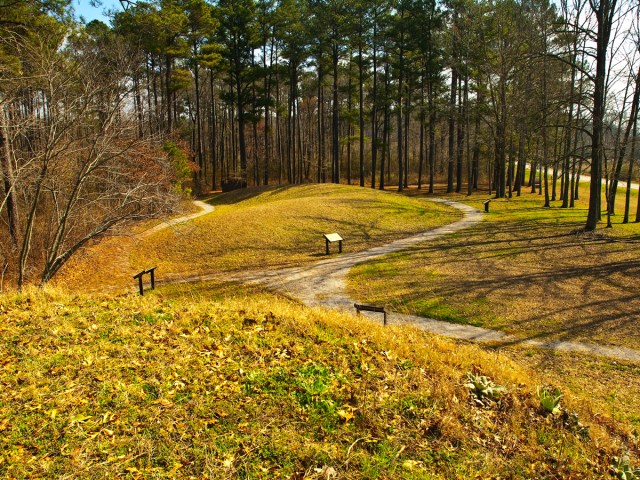
The Natchez Trace spans 450 miles from Natchez, Mississippi, through Alabama to Nashville, Tennessee. Some of North America’s earliest inhabitants walked along this historic trail. It comprises the Rocky Springs Trail, the Tupelo Trail, and the Ridgeland Trail in Mississippi, in addition to the Leipers Fork Trail in Tennessee. A part of the southernmost part of the trail called the Potkopinu Section runs along a sunken road that is likely the remnant of an old trail that once spanned from the Choctaw Nation to Natchez.
New England Trail
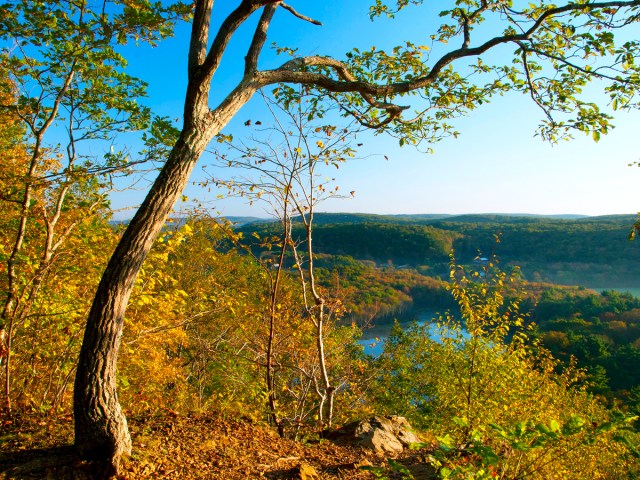
The New England Trail runs from Long Island Sound in Connecticut to the Massachusetts-New Hampshire border. It courses through wetlands, lakes, streams, waterfalls, mountain ridges, summits, and river valleys. Hikers can attempt the New England Trail (NET) Hike Challenge, which means hiking 50 or 100 unique or repetitive miles during one calendar year to receive a prize.
North Country Trail
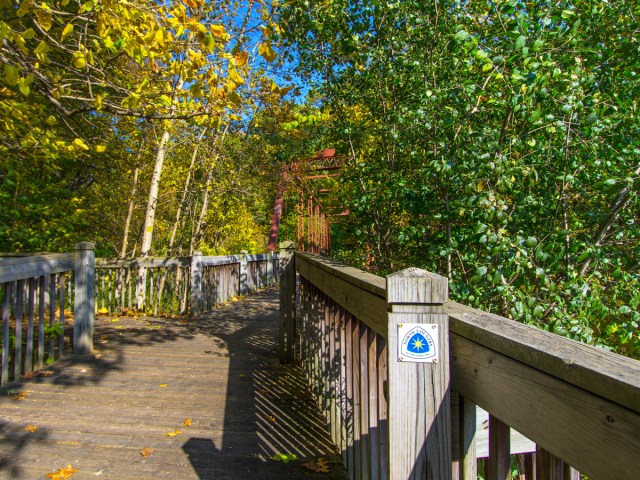
Spanning an incredible 4,600 miles across the northern states, the North Country Trail is the longest national scenic trail in the United States. The trail incorporates segments of pre-existing trails, slicing through eight separate states past three of the Great Lakes as it winds from Middlebury, Vermont, to Lake Sakakawea State Park in North Dakota. Along the way, the trail passes through beloved preserves like the Chippewa National Forest and Adirondack Park.
Pacific Crest Trail
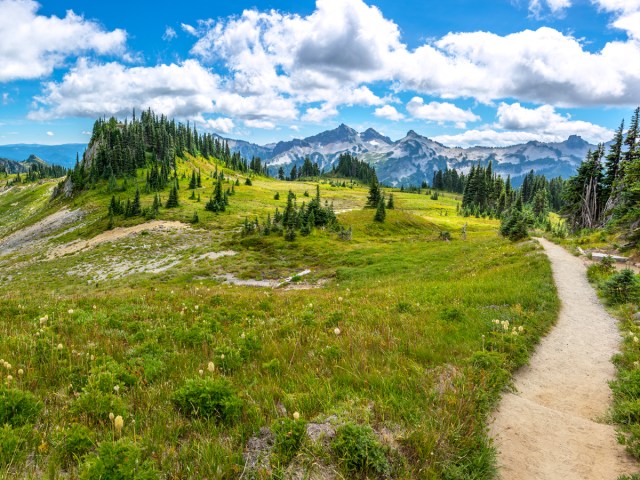
The Pacific Crest Trail spans 2,650 miles from the Mexican border in California to the Canadian border in Washington. Nearly all of the trail is through untouched nature, including several national parks, mountain ranges, and deserts. It includes some of the highest regions in the Cascade and Sierra Nevada mountain ranges — spanning an elevation from just above sea level in southern California to over 13,000 feet at Forester Pass between Sequoia National Park and Kings Canyon National Park.
Hikers can choose to conquer the trail either northbound or southbound. The entirety of the trail is also open to equestrians who choose to make the journey on horseback. In her bestselling memoir Wild, author Cheryl Strayed wrote about the self-exploration journey she experienced while hiking the entire Pacific Crest Trail.
Pacific Northwest Trail
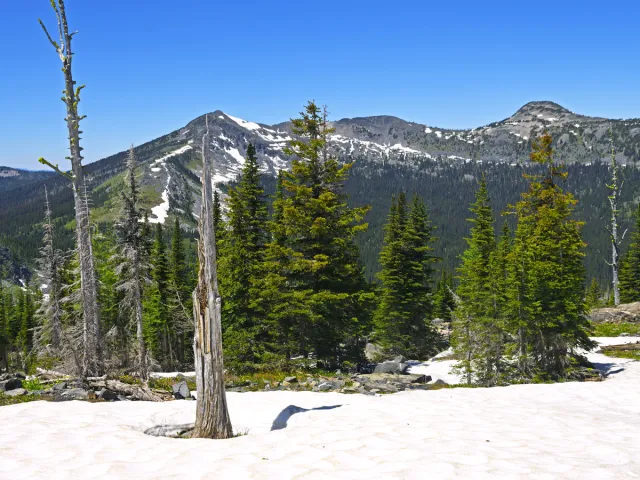
Beginning at the Continental Divide in Montana, the Pacific Northwest Trail skirts the U.S.-Canadian border as it traverses 1,200 miles before ending at the Pacific Ocean near Cape Alava, Washington. Along the way, it crosses through some of the most breathtaking terrain in the U.S., including multiple national parks, national forests, and mountain ranges in Montana, Idaho, and Washington. Once hikers arrive at the coast on the Olympic Peninsula, they enter into some of the most remote wilderness in the United States located deep in the heart of Olympic National Park.
Potomac Heritage Trail

Spanning 710 miles, the Potomac Heritage Trail is an interconnected set of trails and rivers that are navigable by hikers, bikers, and kayakers alike. Carving through Washington, D.C, Maryland, West Virginia, and Pennsylvania, the beautiful landscape of the Potomac Heritage Trail once provided the backdrop for pivotal moments in American history. It witnessed the likes of famous European settlers like Captain John Smith and George Washington. Unlike many of the other national scenic trails, the Potomac Heritage Trail has numerous offshoots and alternative paths on which hikers can chart their own adventure.
More from our network
Daily Passport is part of Inbox Studio, which publishes content that uplifts, informs, and inspires.

